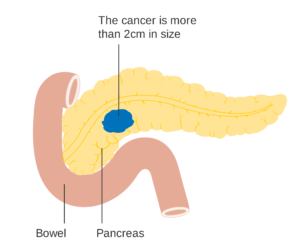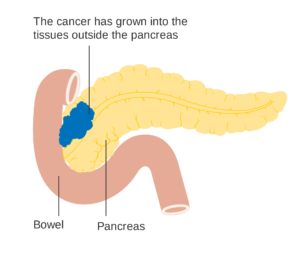Pancreatic Cancer: A Silent Killer Of Millions
Pancreas is a multifunctional organ in the upper abdomen, closely in contact with stomach, intestine, liver and spleen. When working properly, we rarely even think about, though it is essential for many processes in the body. Pancreas is full of highly potent enzymes and should be “handled with great precaution”. On the other hand, a malignant process in pancreas kills over 10 million people per year in quite a brutal manner. There are two major types of pancreatic tumors – exocrine and endocrine, with exocrine tumors being the majority of all pancreatic tumors. We don’t know what causes it; we barely even know what provokes it.
How to catch and fight tumor of pancreas
 Listening to what your body tells you on daily bases is the best way to catch every disease in an early stage. The problem is when body remains silent, and the illness progresses insidiously. This is the case with pancreatic cancer. The first symptoms usually appear when cancer has already grown significantly. The clinical picture that raises suspicions consists of unspecific signs, such as abdominal pain radiating to the back, weight and appetite loss, painless jaundice, nausea and vomiting and fatty, pale, smelly stools. Once you catch it, treatment options are pretty limited.
Listening to what your body tells you on daily bases is the best way to catch every disease in an early stage. The problem is when body remains silent, and the illness progresses insidiously. This is the case with pancreatic cancer. The first symptoms usually appear when cancer has already grown significantly. The clinical picture that raises suspicions consists of unspecific signs, such as abdominal pain radiating to the back, weight and appetite loss, painless jaundice, nausea and vomiting and fatty, pale, smelly stools. Once you catch it, treatment options are pretty limited.
The therapy weapons of choice
Every therapy in oncology is based on balancing between cost and benefit and it depends on the general health of the patient, nature and size of the tumor, other diseases and chances for any success if certain therapy method is applied. Surgical removal is usually the most effective method, but since majority tumors are diagnosed in late stage when inoperable, the options are usually narrowed down to radiotherapy and chemotherapy or a combination of these two.
High hopes of new “double – targeting” approach
 A team of scientists from the Queen Mary University of London might have a way to improve current therapy approaches. They conducted an early study, and the initial results are promising. They studied the morphology and behavior of the pancreatic tumor and searched for the way to amplify the effects of currently used chemotherapy. So far, chemotherapy used particular drugs, such as gemcitabine, to target and attack malignant cells. But malignant cells are surrounded by stromal cells, supporting tissues, important for tumor growth, metastases and communication between tumor cells.
A team of scientists from the Queen Mary University of London might have a way to improve current therapy approaches. They conducted an early study, and the initial results are promising. They studied the morphology and behavior of the pancreatic tumor and searched for the way to amplify the effects of currently used chemotherapy. So far, chemotherapy used particular drugs, such as gemcitabine, to target and attack malignant cells. But malignant cells are surrounded by stromal cells, supporting tissues, important for tumor growth, metastases and communication between tumor cells.
The idea is to use modified Vitamin A to target stromal cells as well, combined with chemotherapy. The addition of Vitamin A has shown successful in preventing cancer’s proliferations and invasion to surrounding tissues. Attacking stromal cells block signal communication between tumor cells and breaks down tumor’s infrastructure. The clinical trial is currently being tested in Barts Cancer Institute Centre for Experimental Cancer Medicine, and scientists hope to reach official approval in few years.
No universal advice
No particular advice can be given to patients on how to behave to avoid it. You can quit smoking, lose your weight and maintain you blood sugar levels normal, you can even treat chronic pancreatitis, but there is nothing you can do about aging and genetic predisposition, as two leading risk factors. Once you get it, that’s a pretty poor prognosis.
[themify_box style=”red warning shadow” ]Cancer of the pancreas is the great leader among mortality rates of all cancers with 95% patients dying within five and even 74% within the first year after the diagnoses.[/themify_box]
If it spreads to the other organs, expected surviving period is less than six months. This tumor is, also, one of few tumors, which survival rate hasn’t increased significantly for 50 years. This awful scenario is due to poor diagnostic tools and tumor’s unspecific symptoms.

